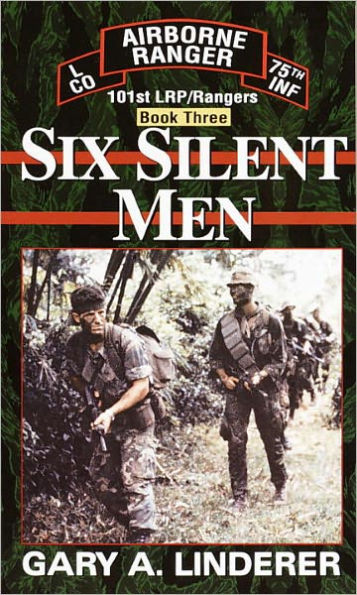"The Eyes and Ears of the Screaming Eagles . . ."
By 1969, the NVA had grown more experienced at countering the tactics of the long range patrols, and SIX SILENT MEN: Book Three describes some of the fiercest fighting Lurps saw during the war. Based on his own experience and extensive interviews with other combat vets of the 101st's Lurp companies, Gary Linderer writes this final, heroic chapter in the seven bloody years that Lurps served God and country in Vietnam. These tough young warriors--grossly outnumbered and deep in enemy territory--fought with the guts, tenacity, and courage that have made them legends in the 101st.
1100273056
By 1969, the NVA had grown more experienced at countering the tactics of the long range patrols, and SIX SILENT MEN: Book Three describes some of the fiercest fighting Lurps saw during the war. Based on his own experience and extensive interviews with other combat vets of the 101st's Lurp companies, Gary Linderer writes this final, heroic chapter in the seven bloody years that Lurps served God and country in Vietnam. These tough young warriors--grossly outnumbered and deep in enemy territory--fought with the guts, tenacity, and courage that have made them legends in the 101st.
Six Silent Men
"The Eyes and Ears of the Screaming Eagles . . ."
By 1969, the NVA had grown more experienced at countering the tactics of the long range patrols, and SIX SILENT MEN: Book Three describes some of the fiercest fighting Lurps saw during the war. Based on his own experience and extensive interviews with other combat vets of the 101st's Lurp companies, Gary Linderer writes this final, heroic chapter in the seven bloody years that Lurps served God and country in Vietnam. These tough young warriors--grossly outnumbered and deep in enemy territory--fought with the guts, tenacity, and courage that have made them legends in the 101st.
By 1969, the NVA had grown more experienced at countering the tactics of the long range patrols, and SIX SILENT MEN: Book Three describes some of the fiercest fighting Lurps saw during the war. Based on his own experience and extensive interviews with other combat vets of the 101st's Lurp companies, Gary Linderer writes this final, heroic chapter in the seven bloody years that Lurps served God and country in Vietnam. These tough young warriors--grossly outnumbered and deep in enemy territory--fought with the guts, tenacity, and courage that have made them legends in the 101st.
4.99
In Stock
5
1

Six Silent Men
384
Six Silent Men
384Related collections and offers
4.99
In Stock

Product Details
| ISBN-13: | 9780307559760 |
|---|---|
| Publisher: | Random House Publishing Group |
| Publication date: | 02/04/2009 |
| Series: | 101st LRP Rangers , #3 |
| Sold by: | Random House |
| Format: | eBook |
| Pages: | 384 |
| Sales rank: | 516,663 |
| File size: | 5 MB |
About the Author
From the B&N Reads Blog
